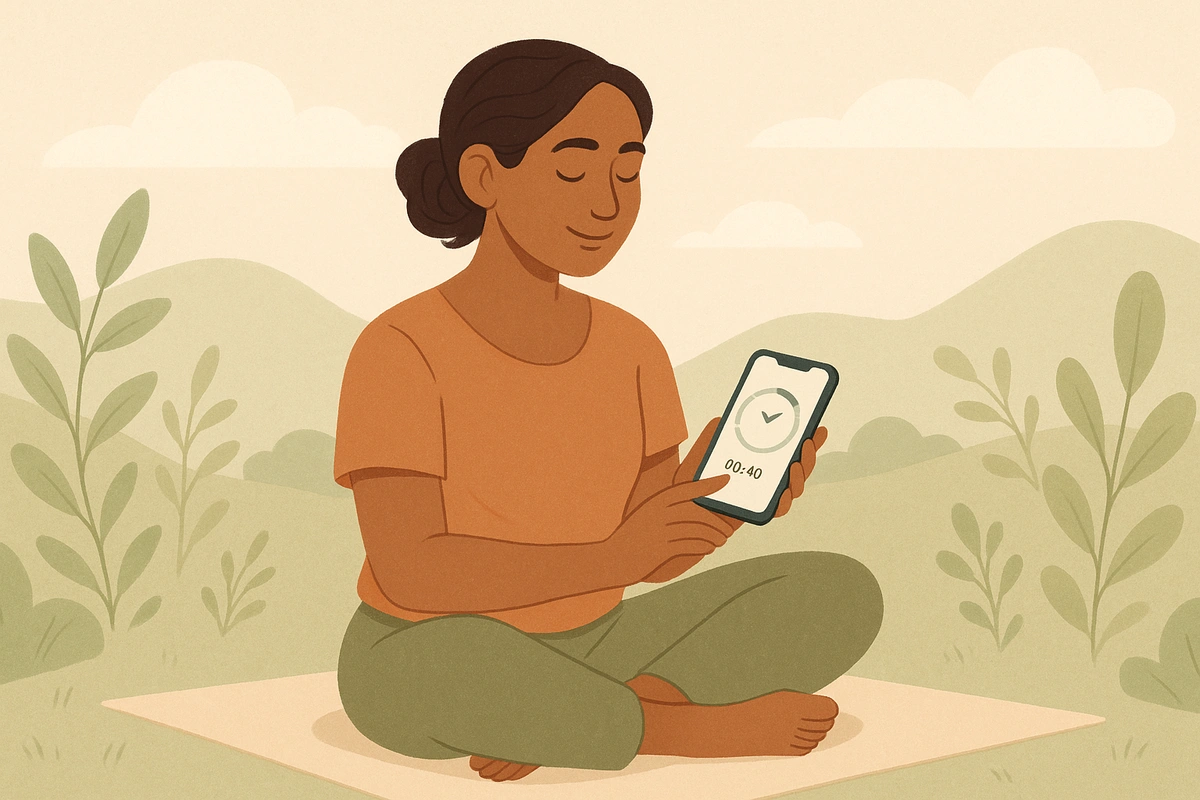A custom breathing timer provides structured visual or auditory guidance for specific breathing patterns that rapidly activate the nervous system's relaxation response, delivering immediate anxiety and stress relief within 2-5 minutes of practice.

Struggling to calm racing thoughts during stressful moments? Finding it difficult to focus on breathing techniques without guidance, or feeling overwhelmed by anxiety that seems impossible to control? When panic strikes or stress escalates, your mind often becomes too scattered to remember proper breathing techniques or maintain the rhythm needed for effective nervous system regulation.
This evidence-based approach transforms scattered breath control attempts into a precise nervous system regulation tool that delivers immediate relief. A custom breathing timer provides structured guidance for specific breathing patterns designed to rapidly activate your body's natural relaxation response. Research demonstrates that guided breathing interventions produce significantly greater anxiety reduction than unguided attempts.
Custom breathing timers operate through multiple evidence-based physiological and psychological mechanisms that directly influence the nervous system's stress response. The fundamental effectiveness stems from vagus nerve stimulation - controlled breathing patterns activate the vagus nerve, which signals the parasympathetic nervous system to initiate the body's relaxation response.
The practice works through what researchers call "respiratory sinus arrhythmia" - the natural variation in heart rate that occurs with breathing cycles. Structured breathing optimizes this pattern, increasing heart rate variability, which is associated with better emotional regulation, stress resilience, and overall cardiovascular health.
One critical mechanism is the modulation of carbon dioxide levels in the bloodstream. Controlled, extended exhalations help normalize CO2 levels that become elevated during anxiety, directly counteracting the physiological changes that maintain panic and stress responses.
The timer guidance leverages what psychologists call "external regulation" - using environmental cues to support behavioral control when internal self-regulation is compromised by stress or emotional intensity. This is particularly valuable during anxiety when cognitive resources are consumed by worry and fear.
Structured breathing also works through attention regulation mechanisms. Focusing on breath timing and timer cues redirects attention away from anxious thoughts and physical sensations, interrupting the cognitive rumination cycles that maintain anxiety and stress responses.
The practice activates baroreceptor sensitivity - pressure sensors in the cardiovascular system that communicate with the brain about relaxation needs. Slow, deep breathing stimulates these receptors, sending direct signals to reduce heart rate, blood pressure, and stress hormone production.
From a neuroscience perspective, controlled breathing influences multiple brain regions including the amygdala (fear center), prefrontal cortex (executive control), and insula (body awareness), creating integrated neural changes that support both immediate calm and long-term emotional regulation capacity.
The timer component specifically addresses what researchers call "pacing dysfunction" that occurs during anxiety - the tendency for breathing to become rapid, shallow, or irregular. External pacing restores optimal breathing patterns more effectively than internal timing attempts during emotional distress.
Additionally, the predictable, rhythmic nature of timer-guided breathing activates entrainment processes where multiple physiological systems synchronize with the breathing rhythm, creating coherent patterns that optimize nervous system function and emotional regulation.
The visual or auditory feedback also leverages biofeedback principles, providing real-time information about proper technique execution that improves learning and effectiveness compared to unguided practice attempts.
"I feel lightheaded or dizzy during breathing practice" - This usually indicates breathing too forcefully or rapidly. Slow down the pace, breathe more gently, and ensure you're not hyperventilating. Consider starting with shorter sessions or consulting healthcare providers if symptoms persist.
"I can't seem to focus on the timer guidance" - This is normal, especially during high anxiety. Try shorter sessions, simpler breathing patterns, or apps with stronger visual/auditory cues. Don't judge mind wandering; simply redirect attention back to breathing and timer.
"The breathing patterns feel forced or uncomfortable" - Adjust timer settings to match your natural breathing rhythm more closely, then gradually modify toward optimal patterns. Forced breathing can increase rather than decrease anxiety, so prioritize comfort over perfect technique initially.
"I don't notice any calming effects" - Some people need longer practice periods to experience benefits. Try extending sessions to 5-10 minutes, experiment with different breathing ratios, or combine with other relaxation techniques. If anxiety is severe, consider professional support.
"I forget to use breathing timers when actually stressed" - Set phone reminders for typical stress times, practice using timers during mild stress to build habits, or ask trusted people to remind you about breathing techniques during difficult moments.
"I feel self-conscious about breathing practices in public" - Many breathing techniques can be done discretely without obvious visual cues. Practice subtle breathing rhythm changes, use silent timer apps, or find private spaces like restrooms or cars for brief sessions.